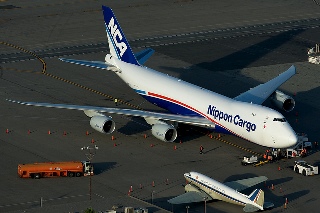 The air cargo industry continues to show cautious market growth as global demand sustained its ongoing upward trajectory through February.
The air cargo industry continues to show cautious market growth as global demand sustained its ongoing upward trajectory through February.
The International Air Transport Association (IATA) data showed international air cargo traffic in February rose 2.9 percent year-over-year.
The first two months of 2014 saw an overall 3.6 percent improvement in demand over the previous year, continuing the strengthening in cargo markets which began in the second half of 2013.
Because of the Lunar New Year falling on January 31, demand for Asia-Pacific carriers fell slightly in February, growing just 0.1 percent compared to February 2013. But regional trade growth in recent months “has been improving, so stronger airfreight growth should be posted in the months ahead,” said IATA.
But it pointed to the risk of a slowdown of the Chinese economy, which could restrict trade and freight demand. Regional capacity grew faster than demand at 3.9 percent.
The vast majority of the growth in cargo in February was realized by airlines in the Middle East and Europe, which recorded 11.9 percent and 5.5 percent growth, respectively, compared to the same period last year.
“Cargo has had a positive start to the year. There is good cause for measured optimism for the cargo industry’s prospects in 2014. The 3.6% growth in demand recorded over the first two months of this year is a significant step up from the 1.4% growth in demand over the whole of 2013,” said Tony Tyler, IATA’s director general and CEO.
But he warned of some serious trends “which are not in the industry’s favor,” including on-shore manufacturing and protectionism.
“The world’s top 20 economies implemented some 23% more protectionist measures last year than in 2009. These factors are a major part of the reason why we are not seeing trade growth of 5-6%, which we would expect to see at the current level of domestic production,” said Tyler. “Currently trade and domestic production growth is running at about the same level. The World Trade Organization’s agreement in Bali late last year gives hope for invigorated world trade. It’s important that governments keep their commitments.”
Photo: BriYYZ




